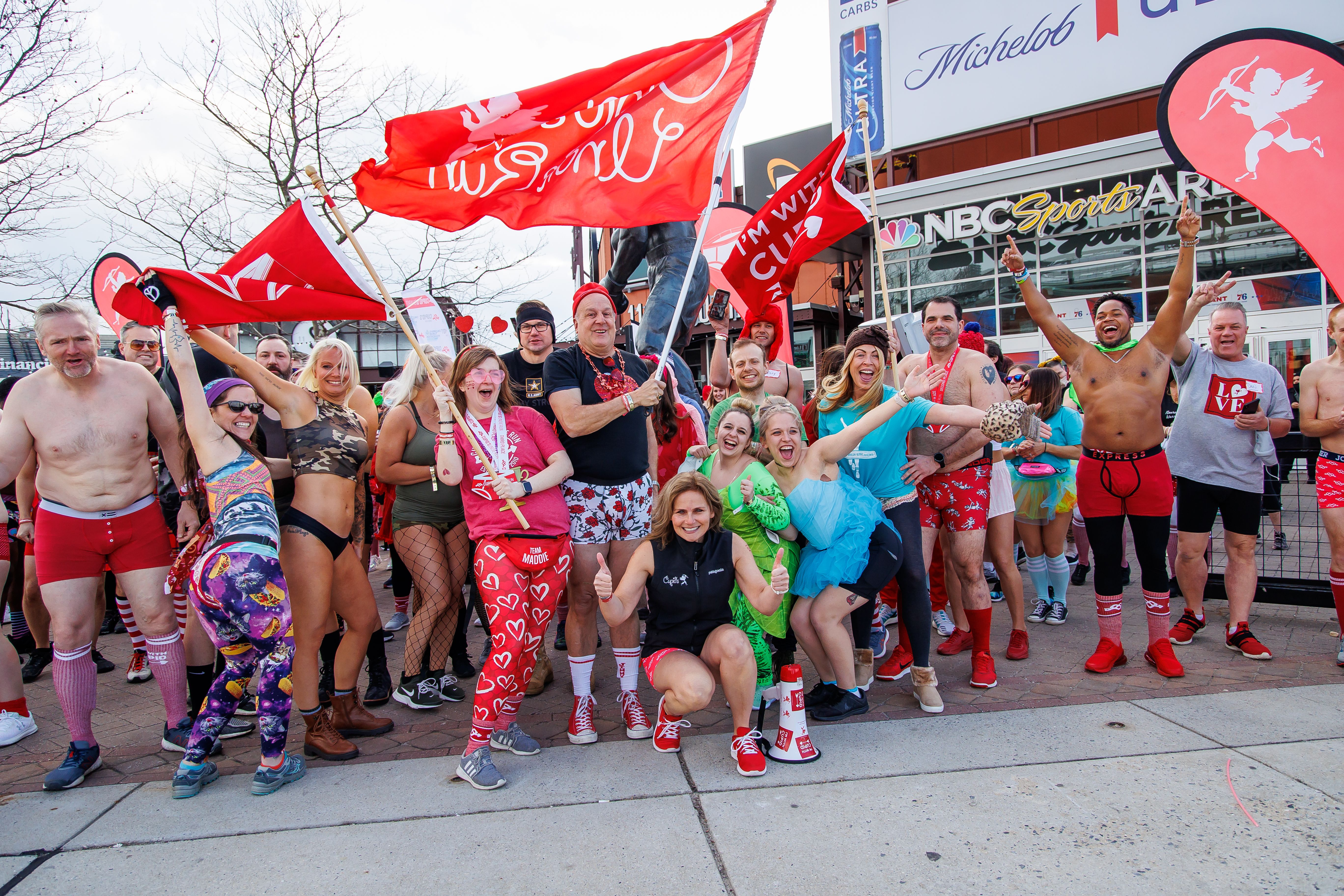This Valentine’s Day, give something from the bottom of your heart – and your feet! Take part in an unusual fundraising run for a worthy cause. Why is the run unusual? Here’s a hint: Many people give a romantic gift of underwear for Valentine’s Day.

Normally, one would not want to associate the words “underwear” and “runs.” But on Saturday, February 11, thousands of people will participate in a, uh, “stripped down” version of a regular fundraising run. Literally. Cupid’s Undie Runs will be taking place all across the country. And Cupid’s Undie Run/KC is one of them. Click here for a brief synopsis.
As the name implies, people who participate in Cupid’s Undie Run are encouraged to run in their undies. That might mean boxers, briefs, tidy whities, camis, sports bras, bikini briefs, tap pants, thongs, underwires, high cuts, Granny panties, or whatever kind of underwear is under there. (Too bad it’s not a race, ‘cuz there could be some pretty racy racers!) As it is, the Cupid’s Undie Run website says the event is the largest pantless party and mile(ish) run in the nation.

On a more serious note, the run is being sponsored by the Children’s Tumor Foundation to support those affected by Neurofibromatosis (NF), a genetic disorder that causes tumors to grow on nerves throughout the body and affects 1 in every 3,000 births.
Undie runners will assemble at McFadden’s Sports Saloon at noon and kick things off with drinking and dancing. Then they’ll run about a mile and end it all with an epic dance party. (Dancing cheek-to-cheek, perhaps?)
You can opt to buy a ticket and be an undie runner, or donate to someone else who’s running. The Cupid’s Undie Run/KC goal for this year is $20,000.
With your help, the foundation can help improve treatments, improve care, and improve lives for those living with NF.
A bit more about Neurofibromatosis: There are three types: NF1, NF2, and schwannomatosis. Neurofibromatosis type 2 (NF2) is much less common than NF1. Most people develop symptoms in the late teen and early adult years, although about 10% of people develop symptoms during late childhood.
To see hundreds more events coming up, visit our full events calendar.
Related Posts
EE Versus UH
Our story on the quirks of pronunciation and word choices in Missouri (“What Did You Say,” January/February 2023) gave solid scientific reasons behind the reasons we say things the way we say them here in the Show-Me State. It turns out, that isn’t the first time our magazine has tackled the subject. Nearly 20 years have passed since we first published this column, but the debate lives on.
New faces join Missouri Life team
Missouri Life magazine has added three new members to its staff to bring readers a look at the people, culture, artwork, food, and stories that define the Show-Me State.
Find Out Why Two Missouri Distance Runners Choose Beef
Two Missouri distance runners from Rogersville love to cook with beef—find out why.



